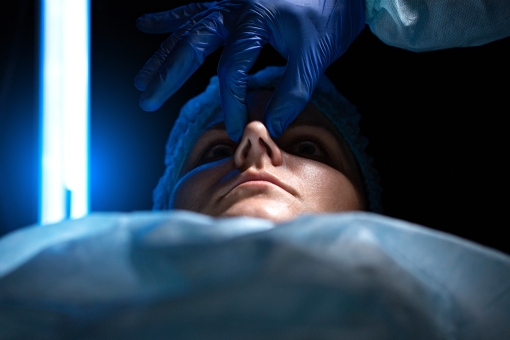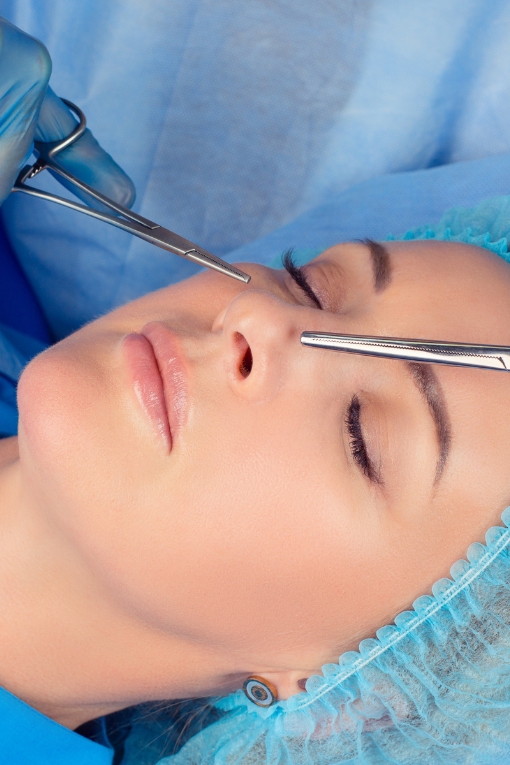Expert Cosmetics Since 2017
Choice of Five-Star Clinics
Friendly and Knowledgeable Team
Tip Correction Rhinoplasty Surgery
Why choose tip correction rhinoplasty surgery?
Tip correction rhinoplasty is a surgical procedure aimed at correcting deformities or complications associated with the nasal tip, which could arise from a previous rhinoplasty or be inherent. This procedure is often sought to improve both the functional and aesthetic aspects of the nose. The reasons for choosing tip correction rhinoplasty include addressing issues like a drooping nasal tip, especially when smiling, or complications from a previous nose job such as a disfigured nasal tip which might result in a poor surgical result even if the rest of the nose appears attractive.


How does tip correction rhinoplasty surgery work?
The surgery involves a detailed procedure where the aesthetic subunits of the nasal tip are conceptualized as geometric polygons to define the existing deformity, operative plan, and aesthetic goals. During the surgery, modifications are made to the cartilage of the nasal tip, which may include excision (removal), dissection (cutting), repositioning, or augmentation to create the desired outcome. Techniques such as autorim graft, lateral crural steal, and footplate setback are employed to achieve symmetric domes with correct lateral crural resting angles. The surgery also may involve columellar reconstruction, creating a columella breakpoint, and infralobular caudal contour graft to further refine the aesthetics of the nasal tip.
What are the results like?
The results of tip correction rhinoplasty can significantly improve the appearance and functionality of the nose. For instance, post-surgery, the nasal tip may attain a more ideal angulation, closer to 95 degrees, making the aesthetic improvement particularly noticeable when smiling. Additionally, patients may observe a more symmetrical and well-defined nasal tip which aligns harmoniously with other facial features. The surgery may also help in resolving health-related issues such as breathing problems, although the specific outcomes can vary from patient to patient based on individual circumstances and the skill of the surgeon.
How does tip correction rhinoplasty surgery work?
The surgery involves a detailed procedure where the aesthetic subunits of the nasal tip are conceptualized as geometric polygons to define the existing deformity, operative plan, and aesthetic goals. During the surgery, modifications are made to the cartilage of the nasal tip, which may include excision (removal), dissection (cutting), repositioning, or augmentation to create the desired outcome. Techniques such as autorim graft, lateral crural steal, and footplate setback are employed to achieve symmetric domes with correct lateral crural resting angles. The surgery also may involve columellar reconstruction, creating a columella breakpoint, and infralobular caudal contour graft to further refine the aesthetics of the nasal tip.
What are the results like?
The results of tip correction rhinoplasty can significantly improve the appearance and functionality of the nose. For instance, post-surgery, the nasal tip may attain a more ideal angulation, closer to 95 degrees, making the aesthetic improvement particularly noticeable when smiling. Additionally, patients may observe a more symmetrical and well-defined nasal tip which aligns harmoniously with other facial features. The surgery may also help in resolving health-related issues such as breathing problems, although the specific outcomes can vary from patient to patient based on individual circumstances and the skill of the surgeon.

Speak to an expert today
Give us a call or fill in our easy to use online form and a member of our customer support team will be in touch with you at a time and date that works best for you.
Frequently Asked Questions
Are there any complications associated with rhinoplasty surgery?
Can rhinoplasty surgery affect my voice?
Is my nose going to be broken during surgery?
Does a nose job last forever?
What are the side effects of rhinoplasty surgery?
Will a nose job help my sinuses?
What happens after a rhinoplasty surgery if I need to wear glasses?
Or call our team to arrange your consultation today:
- 0800 772 0039
View our latest news
The Fascinating Evolution of Cosmetic Surgery: A Journey Through Time
When we think of cosmetic surgery today, the images that often come to mind are those of celebrities with perfectly chiseled features or individuals undergoing transformative procedures for a rejuvenated appearance. However, the art and science of altering the human...
Stay connected

